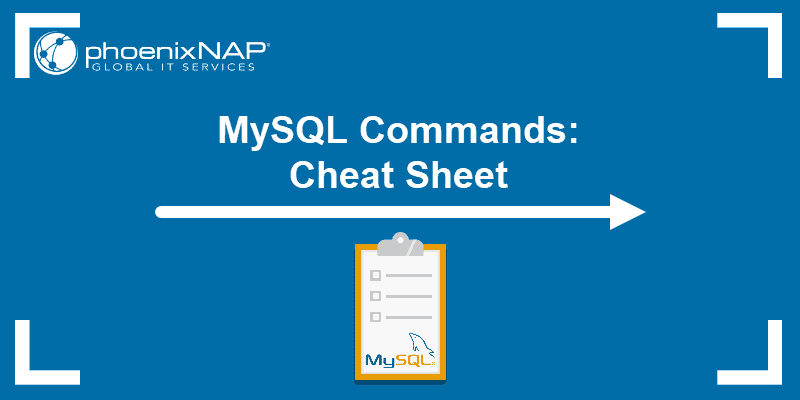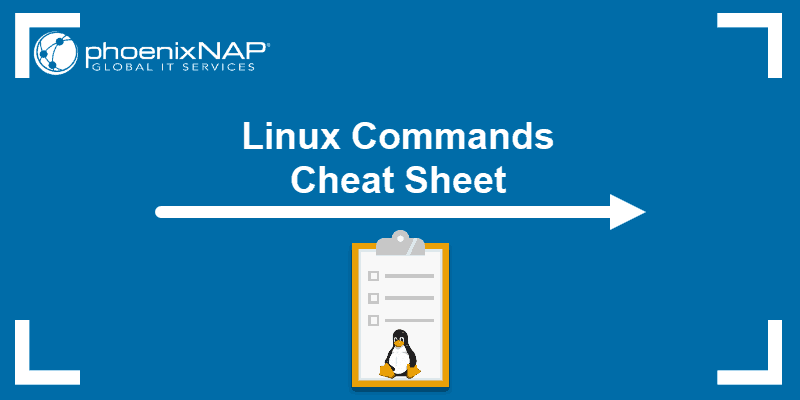Introduction
Technology stacks are sets of individual components that form a complete environment for application development. The components are usually independently developed, but their frequent combined usage and compatibility qualify them to become a stack.
Developers use the LAMP stack because it provides the operating system, web server, database management software, and programming language they need to build web applications.
Learn about LAMP components, how the stack works, and its advantages and disadvantages.
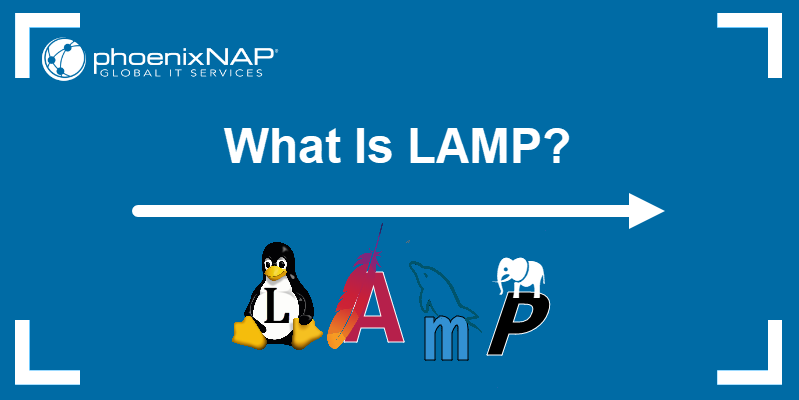
What Is LAMP?
LAMP is a popular open-source technology stack used primarily in web development.
The stack consists of four components necessary to establish a fully functional web development environment. The first letters of the components' names make up the LAMP acronym:
- Linux is an operating system that runs all the components.
- Apache HTTP Server is a web server software that delivers both static and dynamic web pages to users.
- MySQL is a relational database management system used for creating web databases and storing and managing dynamic content.
- PHP, Perl, and Python are programming languages for developing web applications. Developers can choose one of the three languages for building backend solutions.
Each component represents an essential layer of the stack, and together, they are used to create database-driven, dynamic websites.
What Is LAMP Used For?
The LAMP stack is used for building and delivering web-based applications, such as:
- Content Management Systems. CMS platforms, like WordPress or Joomla, are developed using PHP. The LAMP stack pairs PHP with MySQL, which can handle complex data operations, to form a strong foundation for building applications within a CMS framework.
- Ecommerce platforms. Ecommerce applications must be able to manage extensive and growing data sets while maintaining a consistent schema. Relational databases, like MySQL, are a robust backend solution that can efficiently handle transactions, extensive product catalogs, and vast amounts of user data.
- Dynamic websites. Websites that need to adjust content based on user interactions in real-time benefit from PHP's backend scripting capabilities.
- Data-driven applications. LAMP is well-suited for social networking sites, interactive maps, online forums, and web directories. These applications benefit from the stack's ability to process data and complex data structures in real-time.
LAMP Stack Components
The best way to see how Linux, Apache, MySQL, and PHP fit together is by visualizing how the components stack together. Refer to the illustration below to see a concrete depiction of the LAMP stack's architecture:
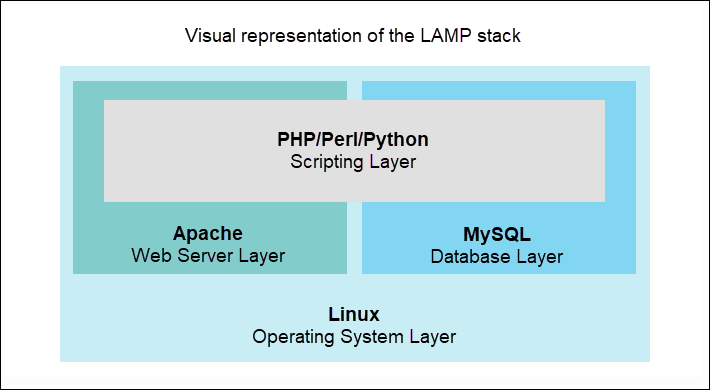
Linux
Linux is the operating system layer and the backbone of the LAMP stack. Because it is flexible, customizable, and open-source, Linux is the most popular OS for web servers. Its robust security features provide a stable and secure environment for web applications.
PHP and MySQL are optimized for Linux and benefit from its efficient resource management and compatibility with a wide range of hardware. Due to these optimizations, web applications on the LAMP stack can efficiently manage high-traffic volumes and complex data operations.
Note: Apache, MySQL, and PHP/Perl/Python are cross-platform solutions, meaning that they also support other operating systems such as Windows, macOS, etc.
Apache
Apache HTTP Server is a popular web server software that runs on top of the Linux operating system in the LAMP stack. The role of the web server is to process requests and transmit information through the internet via HTTP.
With its Multi-Processing Modules, Apache can be configured as a process-based and threaded server. The server's modular architecture supports features such as advanced protocol handling.
Apache is also known for its filters and processes applied to the data that is handled by the server. Both static and dynamic content can be encrypted, scanned for malware, and compressed using filters.
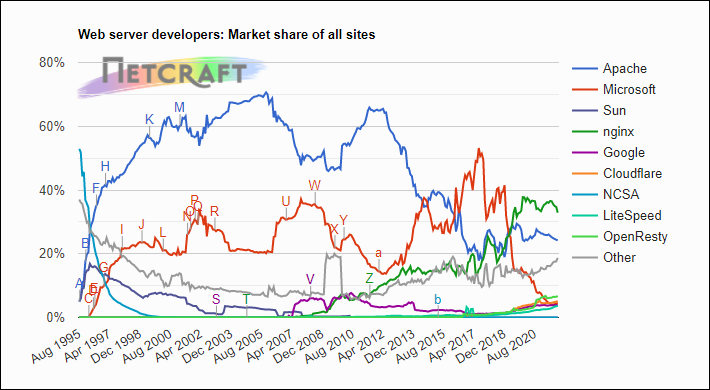
An increasingly popular alternative to Apache is NGINX, a web server whose popularity has been continually on the rise. While Apache and NGINX are both capable servers, users choose depending on the usage scenario, content type, and available hosting options.
MySQL
MySQL is a database management system renowned for its support of SQL and relational tables, making it a good choice for creating and maintaining enterprise-level databases.
It is also cross-platform compatible. This feature is essential for web development stacks like LAMP since web applications typically target multiple operating systems.
While MySQL is traditionally viewed as more vertically scalable, it can also be horizontally scaled with strategies like replication and sharding. Projects that expect high traffic volumes typically look to non-relational solutions because of their scalability, but MySQL can handle heavy workloads with added optimization.
Note: MariaDB, a relational database system forked from MySQL, is often used as a direct replacement in the LAMP stack. Despite their high compatibility, the two have nuanced differences, which may increase over time.
PHP
PHP (Hypertext Preprocessor) is a programming language within the LAMP stack used for developing the server-side logic of websites and web applications. When a visitor requests a page, the server executes PHP scripts to dynamically generate web content, which is then delivered to the visitor's browser.
PHP is a dynamically typed language and can be embedded directly into HTML code, a feature that streamlines the web development process. It seamlessly integrates with MySQL to improve data management and content generation.
The P in the LAMP stack acronym can also refer to two other programming languages - Perl or Python. Developers can select the programming language that best aligns with their project's needs to leverage their unique scripting capabilities.
Note: Check out our LAMP installation guides How to Install LAMP on Debian 11/10 and How to Install LAMP in Ubuntu.
How Does the LAMP Stack Work?
The four stack components allow developers to host, serve, and manage web-based content. The process looks like this:
1. A user enters a URL in their browser to request a webpage.
2. The request reaches the Apache web server on the Linux server.
3. Apache serves static content files directly to the browser.
4. If the user's browser requests dynamic content, Apache passes the request to PHP.
5. PHP executes the necessary scripts and fetches or updates data in the MySQL database.
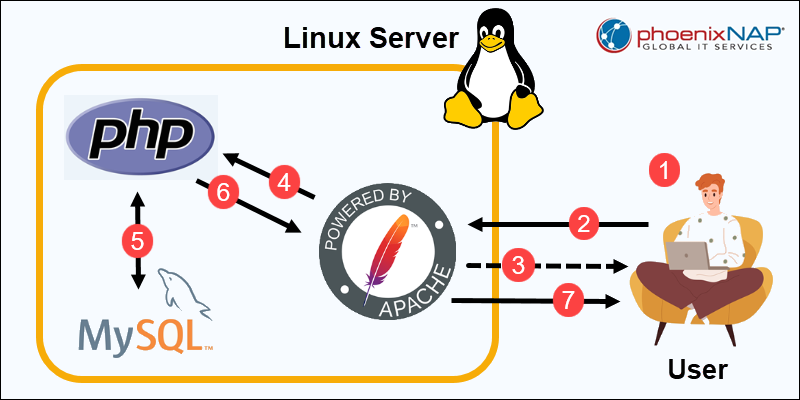
6. PHP sends the generated HTML to Apache.
7. Apache delivers HTML content to the user's browser. The browser renders the HTML and displays the content to the user
LAMP Benefits
Developers who build and deploy web applications use LAMP because it is:
- Open source. Every component of the LAMP stack is open source, meaning the software's source code can be freely modified and enhanced.
- Customizable. The stack is modular, and developers can replace any component with an alternative open-source solution to fit specific application requirements.
- Well supported. Each stack component has a large and vibrant online community. There are countless resources, such as code libraries, forums, and third-party tools, for streamlining the development process.
- A mature stack. LAMP technologies are stable and reliable, as many issues have been successfully identified and resolved over the years.
- Easy to use. LAMP stack components are straightforward to set up and manage. Development cycles are faster, and solutions are easier to maintain for both new and experienced developers.
LAMP Challenges
LAMP has several disadvantages compared with other technology stacks:
- Platform dependency. LAMP components are cross-platform; however, the stack is traditionally associated with Linux. This may be perceived as a limitation for projects aiming for native compatibility across multiple operating systems.
- Relational database limitations. MySQL is not as efficient at handling unstructured data compared to non-relational databases.
- Performance under heavy load. The Apache HTTP server can run into performance issues under heavy workloads, leading to slower response times.
- Complex development workflow. Switching between coding in Python and PHP on the server side and using JavaScript on the client side can introduce complexity and disrupt the development workflow.
LAMP Stack Alternatives
Open-source alternatives are:
- MEAN (MongoDB, Express.js, Angular, Node.js)
- LEMP (Linux, NGINX, MySQL/MariaDB, PHP/Perl/Python)
- LAPP (Linux, Apache, PostgreSQL, PHP)
- LEAP (Linux, Eucalyptus, AppScale, Python)
- LLMP (Linux, Lighttpd, MySQL/MariaDB, PHP/Perl/Python)
- XAMPP (Cross-platform, Apache, MariaDB, PHP, Perl)
Non-open source alternatives include:
- WAMP (Windows, Apache, MySQL/MariaDB, PHP/Perl/Python)
- WIMP (Windows, Internet Information Services, MySQL/MariaDB, PHP/Perl/Python)
- MAMP (macOS, Apache, MySQL/MariaDB, PHP/Perl/Python)
Note: MEAN is the most popular alternative to the LAMP stack. Learn how LAMP and MEAN compare.
Conclusion
You now understand what the LAMP stack is, how its components function, and what their role is in the web development process.
Consider using Docker to containerize stack applications. Containers are portable and easier to deploy across different environments.
